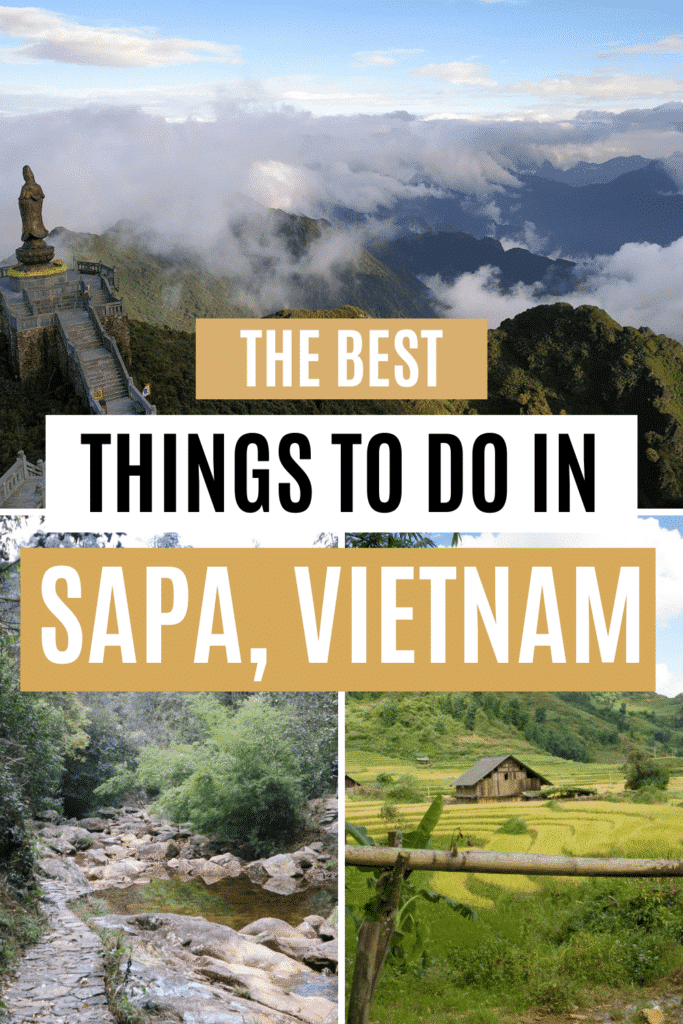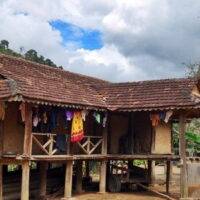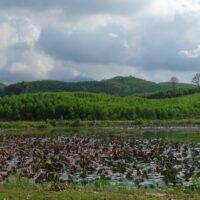Best Things to Do in Sapa, Vietnam – Top Activities and Places to Visit

Planning a trip to Vietnam and want to add Sa Pa to your itinerary? After having explored Vietnam from South to North, I can tell you that Sapa is one of the best destinations in Vietnam. In this travel guide, I share all the best things to do in Sapa as well as useful tips to make the most out of your trip.
Sapa, Vietnam is a charming mountain town located in Northern Vietnam. Known for its breathtaking scenery, rich cultural heritage, and outdoor activities, Sapa is a must-visit destination for anyone traveling to Vietnam.
Whether you’re looking for a relaxing getaway or an adventurous outdoor experience, Sapa has something to offer everyone.
If you’re looking for the absolute best things to do in Sapa, I recommend taking the cable car to the top of Fusipan Mountain, exploring Cat Cat Village, and doing a guided hike through the rice paddies and local villages. Also, staying at a homestay is a must!
One of the most popular activities to do in Sapa is trekking through the Muong Hoa Valley to villages. With its stunning rice terraces, lush forests, and scenic mountain trails, Sapa is a hiker’s paradise. You can choose from a variety of trekking routes, ranging from easy walks to multi-day hikes, depending on your fitness level and interests.
Along the way, you’ll have the opportunity to meet local ethnic minority groups, learn about their traditional customs and way of life, and enjoy some of the most spectacular views in Vietnam.
In addition to trekking, there are many other things to do in Sapa, such as visiting local markets, exploring ancient rock formations, and admiring stunning waterfalls. Whether you’re interested in history, culture, or nature, Sapa has something to offer everyone.
So pack your bags, put on your hiking boots, and get ready to experience the beauty and charm of Sapa, Vietnam.
Planning your Trip to Sapa
The most important thing to consider when deciding whether visiting Sapa is worth it or not is the time of year. The best time is when the rice paddies are green, around August and September – outside of this time the landscape is way less spectacular.
I visited when the fields were just mud, so it looked nothing like the pictures you see. I still enjoyed my trip because of the cultural aspect. I did a homestay and a bit of hiking – and, it was nice to discover the local way of life, shop for handicrafts, and visit the villages.
However, you might be disappointed by the landscape, so keep that in mind.
You should also know that while Sapa is beautiful and culturally rich, it’s also a very rural and very poor part of Vietnam where you might witness some difficult stuff. I personally wouldn’t recommend staying in Sapa Town, I got a pretty off-vibe there, and prepare yourself if you’re not used to traveling to this type of place.

Weather and Climate
The best time to visit Sapa is during the dry season, which runs from September to November. During this time, the weather is relatively stable with sunny days and cool nights, making it perfect for trekking and exploring the rice terraces.
In contrast, January is one of the coldest months in Sapa, with fog often hanging over the valley, partially or entirely blocking Sapa’s famous views. Rice doesn’t grow in Sapa in January, so it’s best to avoid this month if you want to see the lush green rice terraces.
Getting to Sapa
By Train
One of the most popular ways to get to Sapa is by train. You can take an overnight train from Hanoi to Lao Cai, which is the nearest city to Sapa. From Lao Cai, you can take a bus or taxi to Sapa. The train journey takes around 8-9 hours and is a great way to see the countryside.
By Bus
Another option is to take a bus from Hanoi to Sapa. The journey takes around 5-6 hours and is a more affordable option than the train. Several bus companies operate this route, and you can book your tickets in advance online or at a travel agency in Hanoi.
By Car
If you prefer to drive, you can rent a car or hire a private driver to take you from Hanoi to Sapa. This is the most expensive option, but it allows you to travel at your own pace and stop whenever you want. The journey takes around 5-6 hours and takes you through some stunning scenery.
You can also book a 2 to 3-day trip from Hanoi that includes transportation, a hiking guide, and a homestay, like this Sapa 2 Days 1 Night From Hanoi – Overnight in Ta Van Village.
Transportation Within Sapa
Getting around Sapa is fairly easy, with a variety of transportation options available. Taxis are readily available and can be hailed on the street or booked through a ride-hailing app. Alternatively, you can rent a motorbike or bicycle to explore the area at your own pace. Buses are also available for longer journeys to nearby towns.
Language and Communication
While English is not widely spoken in Sapa, many locals do have a basic understanding of the language. It’s a good idea to bring a phrasebook or download a translation app to help with communication. Alternatively, you can join a guided tour to ensure that language barriers are not an issue.
Cultural Events
If you’re interested in experiencing the local culture, plan your trip around the rice harvesting season, which typically takes place from August to October. During this time, you can witness the locals harvesting the rice terraces, which is a fascinating experience.
You can also attend the Love Market, which is held on Saturday nights in Sapa town. This is a traditional event where young people from different ethnic groups come together to find a partner.
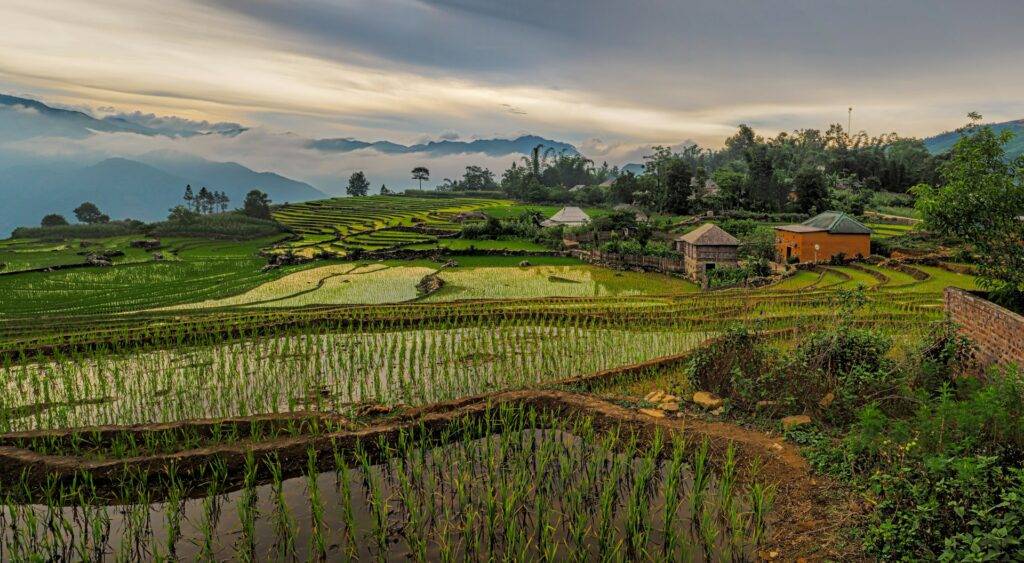
Where to Stay
Homestays
If you are looking for an authentic experience, I recommend staying in a homestay in one of the nearby villages.
Sapa is home to many ethnic minorities, and staying with a local family is a unique opportunity to learn about their culture and way of life.
Ta Phin Village is a popular spot for homestays, they typically include meals and some activities, such as trekking or handicraft workshops. You’ll find many on Booking or Facebook.
Mama Chao Homestay comes highly recommended and is a truly authentic homestay.
Hotels
If you need more comfort, Sapa Town has a wide range of hotels to choose from, ranging from budget to luxury.
For a unique experience, consider staying at the Hôtel de la Coupole – MGallery by Sofitel, which features a stunning design inspired by the region’s hill tribes.
The BB Sapa Resort and Spa is another popular choice, offering a range of amenities including a heated indoor pool and a spa.
If you are traveling on a budget, there are several hostels in Sapa Town that offer affordable accommodation. Go Sapa Hostel and Sapa Backpacker Hostel are both great options with excellent ratings.
Best Things to Do in Sapa
Ride the Cable Car to Fansipan Peak
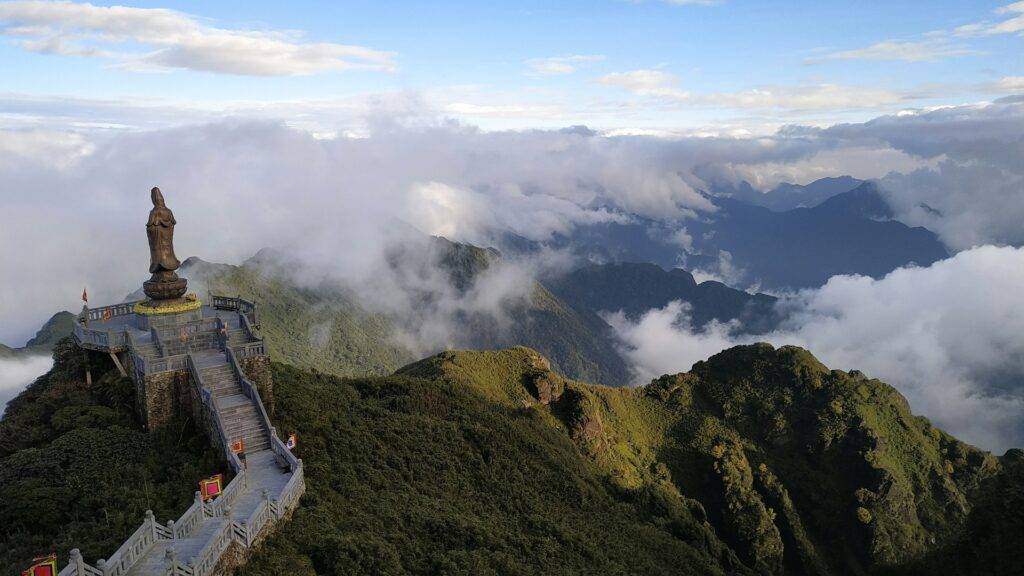
For stunning views, a trip to the top of Mount Fansipan is a must. On a clear day, take the cable car to the summit and enjoy the breathtaking scenery.
A roundtrip ticket costs VND 800,000 and it takes about 15 minutes to reach the top. From there, you can climb up the 600+ steps to the peak or take the funicular for VND 70,000 (one way).
I wouldn’t recommend going if the weather is cloudy as you won’t see much then.
If you’re feeling adventurous, you can also hike to the top. As the highest peak in Indochina, the climb may be challenging, but the views from the top are worth it. It usually takes 2 days back and forth and it’s recommended to hire a guide or book a tour.
Ride a Bike Through the Muong Hoa Valley
The lush greenery of the Muong Hoa Valley is a sight to behold. You can take a bike ride through the valley to see the rice terraces and local villages up close. The valley is also home to Sapa Lake, a serene spot for a picnic or a leisurely stroll.
You can also go hiking through the valley with a local guide for a different experience or book an easy rider tour.
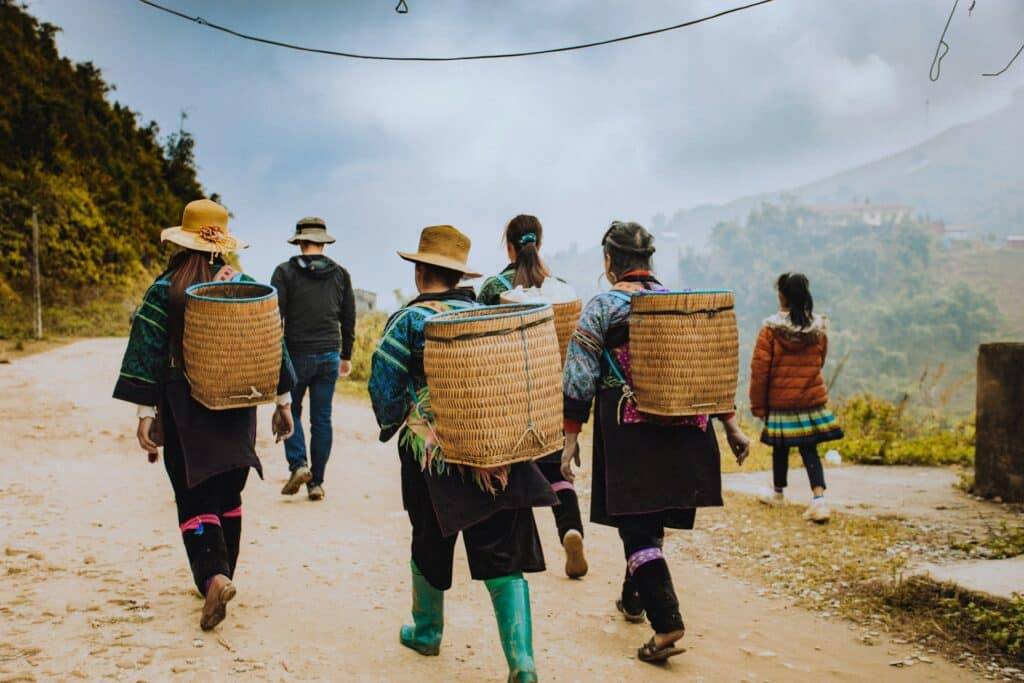
Visit Local Villages
One of the highlights of Sapa is the opportunity to visit local villages and interact with the ethnic minority groups that call the area home.
Cat Cat Village, Ta Phin Village, Tan Van Village, Y Linh Ho Village, and Lao Chai Village are just a few of the villages you can visit to learn about the unique cultures and traditions of the people who live there.
You can visit on your own, either hiking or by renting a bike, but I really recommend going with a local guide. If you’re staying at a homestay, it’s usually included, otherwise, this tour is a great option.
Explore the Markets
Sapa is home to many local markets, where you can find a variety of goods and experience the bustling atmosphere. The main one is located in Sapa Town and operates daily. There you can shop for fresh produce and handicrafts, and grab a bite to eat.
One of the most famous markets is Bac Ha Market, which takes place every Sunday. Here you can find everything from colorful textiles to fresh produce and livestock. It’s a 3-4 hour drive from Sapa but it’s well worth the drive. Your best option is to book a day trip from Sapa or take a tour from Hanoi that includes Sapa and the market, like this 3-day trip.
Another popular market is Can Cau Market, which takes place every Saturday and is known for its beautiful handicrafts. It’s also a bit far from Sapa but you can try adding it to your itinerary.
Learn About Local Handicrafts and Art
The ethnic minority groups in Sapa are known for their beautiful handicrafts. You can find everything from intricately embroidered clothing to handmade silver jewelry.
One popular activity is visiting a local village and learning about the traditional methods of indigo dyeing or taking a H’mong sewing class. Book this Hmong Batik Indigo Embroidery Workshop for a great cultural immersion.
You can also visit the Ta Phin Commune to see the locals singing in their traditional church.
You can also stop by the small Sapa Museum to see a display of traditional items.
Learn About the Ethnic Minority Culture
Sapa is home to many ethnic minority groups, including the Hmong, Dao, Tay, and Nung Dinh people. You can learn about their unique cultures by visiting their villages and participating in their daily activities.
For example, you can learn about the Hmong’s traditional way of life by trekking to their villages and staying in a homestay. You can also visit the Dao’s herbal bathhouses or the Tay’s traditional stilt houses.
Most homestays will arrange everything you need (transportation, food, hiking guide, cultural experiences…). If you like to plan ahead, you can book this experience (with nothing but stellar reviews!).
Go Hiking
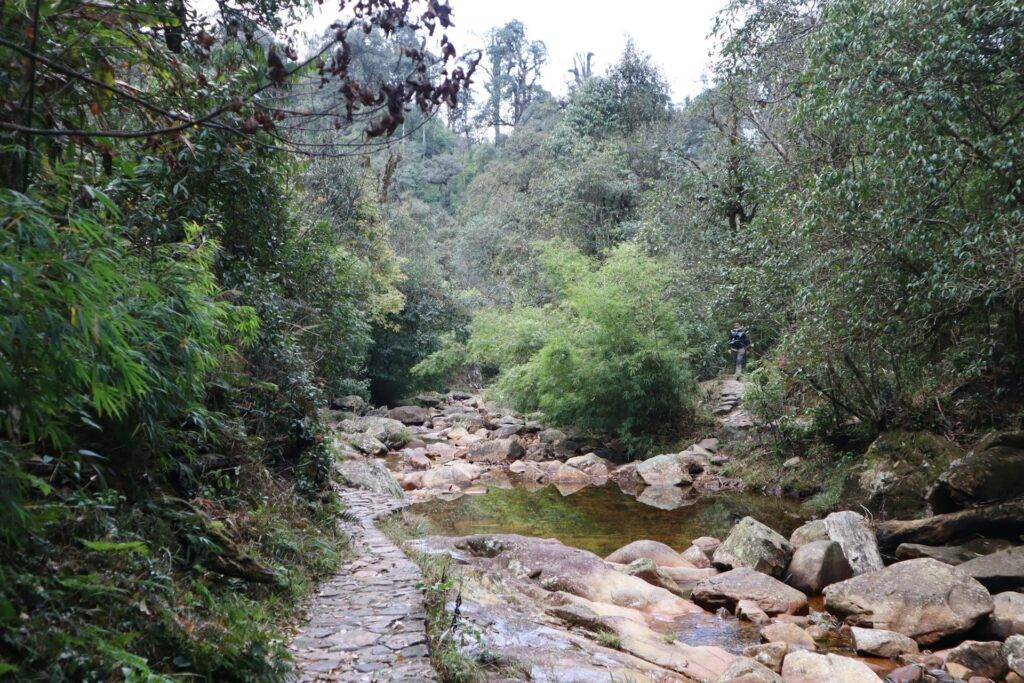
Sa Pa is known for its incredible trekking routes, and there are options for all levels of experience. One popular trek is the hike to Cat Cat Village, which takes you through rice terraces and Hmong villages. You can keep going past the village to Lao Chai, Ta Van, and Giang Ta Chai.
Another popular hike is the one to Love Waterfall, in San Sa Ho Commune, about 15 km west of Sapa town.
From the ticketing booth, it’s a 30-minute hike on a paved path through lush rainforest and open plains.
You’ll need to rent a bike or arrange for transportation. It should cost around VND 250,000 to be taken to Love Waterfall and the nearby Silver Waterfall (which you should also visit!) by motorbike.
You can also book a tour that will take you to Love Waterfall, Heaven Gate and San Sa Ho.
If you’re new to trekking or want to explore Sa Pa with a guide, there are plenty of guided tours available as well. These tours can take you to some of the most beautiful spots in Sapa, including waterfalls and hidden villages. Some tours also offer camping options for a more immersive experience.
For a truly unique experience, consider a multi-day trek. These treks take you to remote villages and areas that are less frequently visited by tourists. You’ll have the opportunity to see a side of Sapa that many visitors never get to experience. Keep in mind that these treks can be challenging and require a higher level of fitness.
Take a Herbal Bath
If you’re looking for something more unique, consider trying a Red Dao herbal bath. This traditional bath involves soaking in a tub filled with water and a blend of herbs, including lemongrass and ginger, which are known for their healing properties.
The bath is said to help with muscle aches, improve circulation, and promote relaxation.
There are several places in Sapa where you can experience a Red Dao herbal bath, including the Red Dao Spa in Ta Phin. A good idea is to hike there, relax at the spa, and take a taxi back to your accommodation.
See Flowers Along the Ham Rong Mountain
Located right next to Sapa Town center, the Ham Rong Mountain, or Dragon Head Moutain because of the shape of its peak, is a must-see while in Sapa.
The road to the top starts behind Sapa Church. It will take you around 2 hours to reach the top and back, from which you’ll get stunning views over the town and Fansipan Mountain. On the way, you can stop at the Ham Rong Flower Garden (only 30 minutes from the church).
Most of the way is paved and signposted. There’s a small entrance fee to pay at the start of the trail.
Food and Dining
When it comes to food and dining in Sapa, you’re in for a treat. The town is known for its delicious local cuisine, street food, and charming cafes and restaurants. Here are some of the best places to eat and drink in Sapa.
Local Dishes to Try
Sapa is famous for its local cuisine, which features a variety of delicious dishes. Some of the must-try dishes include Thang Co (stewed horse meat and organs), Com Lam (bamboo sticky rice), and Cap Nach Pork (a special breed of pig raised by the locals). You can also try Xoi Bay Mau (sticky rice with black beans) and Thit Trau Gac Bep (smoked buffalo meat).
Street Food
If you’re looking for a quick and tasty bite, Sapa’s street food scene won’t disappoint. Head to Sapa Food Court to sample a variety of dishes from different vendors. You can try Banh Mi (Vietnamese sandwich), Pho (noodle soup), and Bun Cha (grilled pork with vermicelli noodles). Don’t forget to try the local specialty, Salmon Sour Hot Pot.
Cafes and Restaurants
Sapa is home to some charming cafes and restaurants, offering a cozy atmosphere and delicious food. Gem Valley Coffee is a popular spot, offering stunning views of the valley and a great selection of coffee and snacks.
You can also try A Phủ Restaurant for a fine dining experience, or take a cooking class at one of the cafes to learn how to make local dishes yourself.
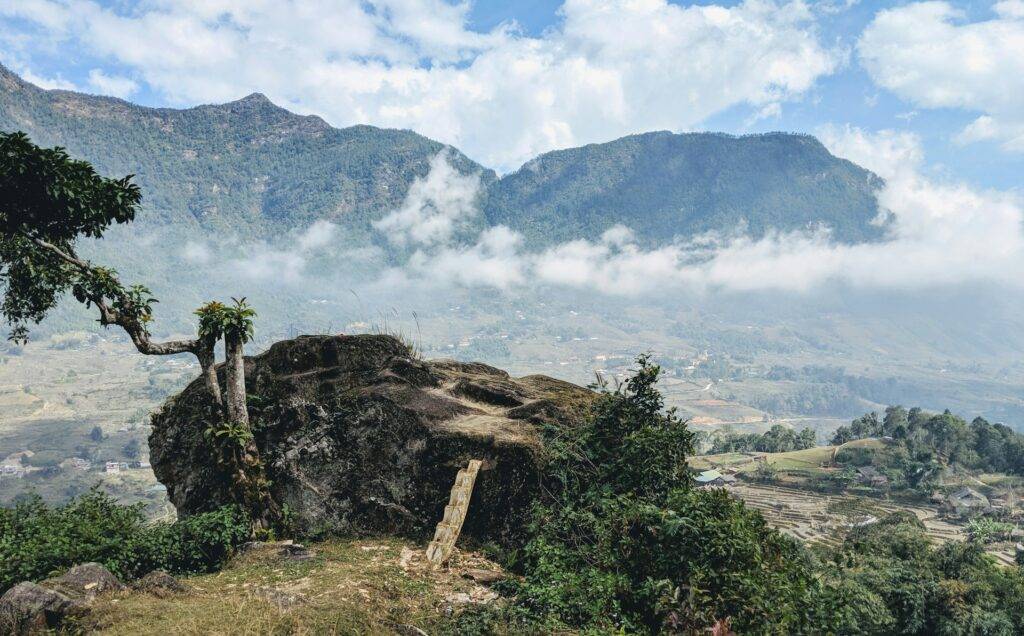
Itinerary Suggestions
One-Day Trip
If you only have one day in Sapa, you can still see some of the highlights of the area. Start your day with a visit to the Sapa Market, where you can see the local ethnic minorities selling their wares.
After that, head to Cat Cat Village, which is just a short walk from the town center. Here, you can see traditional Hmong houses and learn about their culture and way of life.
Finish your day with a trek to the nearby Silver Waterfall, which offers stunning views of the surrounding countryside.
Multi-Day Excursions
If you have more time to spend in Sapa, there are plenty of multi-day excursions to choose from.
One popular option is to take a trek to the top of Fansipan, the highest mountain in Indochina. This trek can take anywhere from two to four days, depending on your fitness level and how much time you have.
Another option is to take a tour of the nearby villages, such as Ta Phin or Lao Chai. Here, you can learn about the different ethnic groups that live in the area and see their traditional way of life.
Save it on Pinterest for later:
